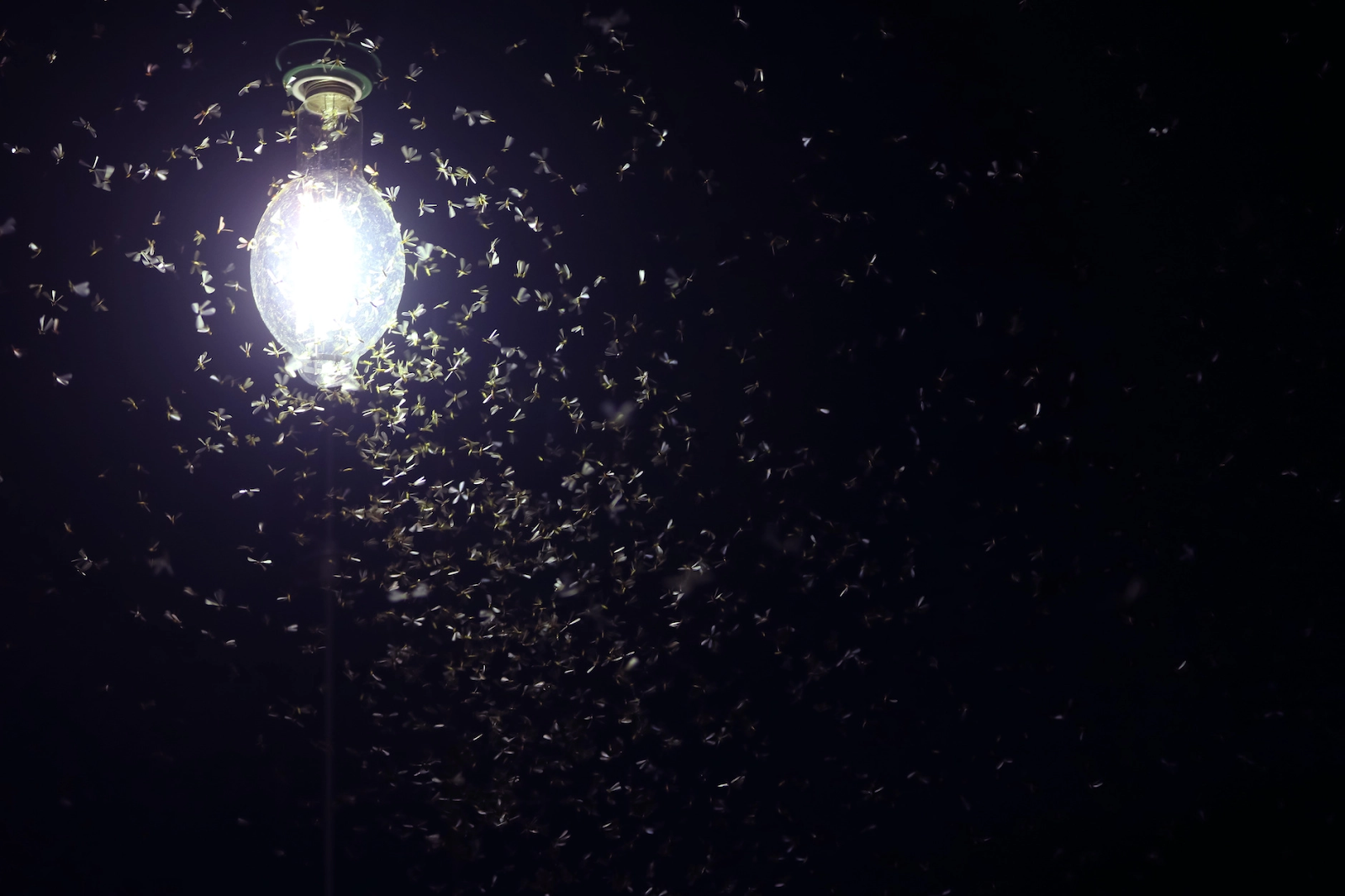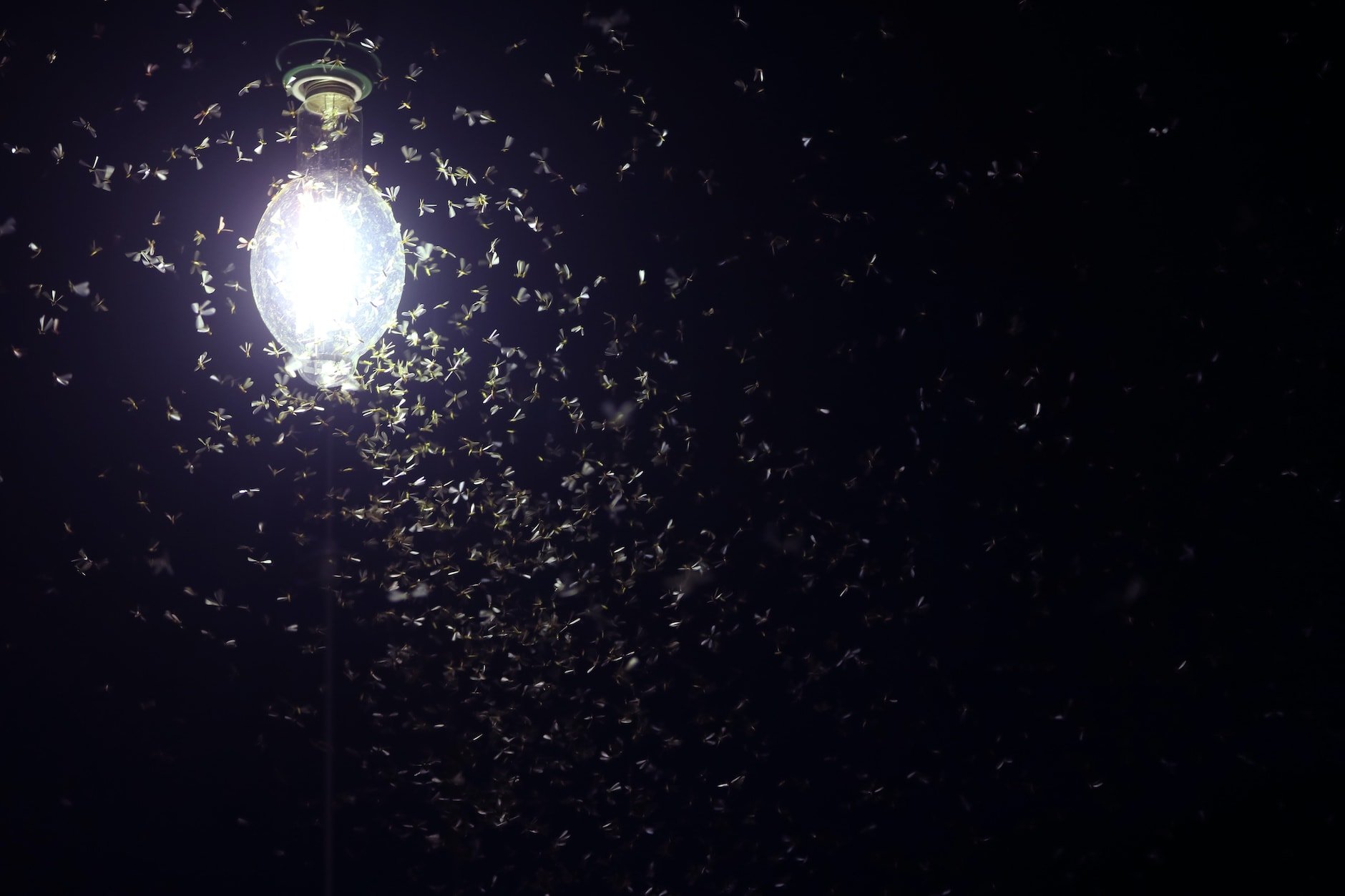Common Tiny Flying Bugs in Bedrooms

Tiny flying insects in your bedroom can be a nuisance, causing annoyance and sometimes even concern about potential health risks. While most are harmless, understanding their characteristics and habits can help you identify them and take appropriate measures to control their presence.
Common Tiny Flying Bugs in Bedrooms
These are some of the most common tiny flying bugs that might find their way into your bedroom:
- Gnats: Gnats are small, delicate flies with slender bodies and long, thin legs. They are typically gray or black in color, with wings that are clear or slightly tinged with brown. Gnats are attracted to moisture and often congregate around drains, sinks, and other damp areas. They are also attracted to light, which is why they may be found in bedrooms, especially near windows or light fixtures.
- Fruit Flies: Fruit flies, also known as vinegar flies, are small, reddish-brown flies with large, red eyes. They are attracted to ripe or fermenting fruit, as well as other sources of sugar and yeast. They are commonly found in kitchens and pantries, but can also make their way into bedrooms if fruit is left out or if there are other sources of food available.
- Fungus Gnats: Fungus gnats are small, dark-colored flies with long, thin legs and wings that are held out at a 45-degree angle when at rest. They are attracted to damp soil and often found in houseplants. Fungus gnats feed on fungi and decaying organic matter, and their larvae can damage plant roots. They may find their way into bedrooms if there are houseplants in the room or if there is a source of moisture, such as a leaky pipe or a damp window sill.
- Moths: Moths are a diverse group of insects with a wide range of sizes, colors, and wing shapes. Some common moths found in bedrooms include clothes moths, which feed on natural fibers like wool and silk, and pantry moths, which infest stored grains and other dried foods. Moths are attracted to light and often fly around light fixtures, windows, and other sources of illumination. They may also be attracted to the smell of food, which is why they are often found in pantries and kitchens.
Why Tiny Flying Bugs are Attracted to Light

Have you ever wondered why those tiny flying bugs seem to be drawn to the light in your bedroom, especially at night? It’s a common phenomenon that often leaves us swatting and frustrated. The answer lies in a fascinating behavior known as phototaxis, a biological response to light.
Phototaxis and Insect Behavior
Phototaxis is the tendency of organisms, particularly insects, to move towards or away from light. In the case of tiny flying bugs, they are typically attracted to light, a behavior known as positive phototaxis. This attraction to light is a natural instinct that has evolved over millions of years. Insects use light cues for various purposes, including:
* Navigation: Many insects rely on the moon and stars for navigation, especially during nighttime flights. Artificial light sources can disrupt these natural cues, leading to confusion and attraction.
* Finding Food: Some insects are attracted to light because it helps them locate food sources, like nectar from flowers.
* Mating: Light can also play a role in insect mating rituals, attracting potential partners.
Artificial Light and Bug Attraction
While natural light sources like the moon and stars are important for insects, it’s the artificial light sources in our homes that often cause the most trouble. Lamps, nightlights, and even the glow from electronic devices can attract bugs. The intensity, color, and wavelength of light all influence how attractive it is to insects.
Different Types of Light and Their Attractiveness, Tiny flying bugs in bedroom attracted to light
Here’s a breakdown of how different types of light sources affect bug attraction:
- Incandescent Lights: Incandescent bulbs emit a warm, yellowish light that is particularly attractive to insects. This is because the light spectrum closely resembles the natural light of the moon, which many insects use for navigation.
- Fluorescent Lights: Fluorescent lights, with their cool, bluish-white light, are generally less attractive to insects than incandescent bulbs. However, some insects, like moths, can still be drawn to them.
- LED Lights: LED lights are becoming increasingly popular due to their energy efficiency and long lifespan. They emit a wide range of colors, but some studies suggest that insects are less attracted to LED lights than incandescent or fluorescent bulbs. This is because LED lights often emit a narrower spectrum of light, making them less appealing to insects that rely on specific wavelengths for navigation.
Reducing Light Pollution in Bedrooms
To minimize bug attraction in your bedroom, you can take steps to reduce light pollution:
- Use Dim Lights: Instead of using bright overhead lights, opt for dim lamps or nightlights. This will reduce the overall amount of light emitted, making your bedroom less appealing to insects.
- Use Yellow Bulbs: If you do use incandescent bulbs, choose yellow bulbs instead of white ones. Yellow light is less attractive to insects than white light.
- Cover Windows: Close curtains or blinds at night to block out light from outside. This will help to prevent insects from being drawn to the light inside your bedroom.
- Use Bug Screens: Install screens on windows and doors to keep bugs out of your bedroom.
Preventing Tiny Flying Bugs in Bedrooms: Tiny Flying Bugs In Bedroom Attracted To Light
:max_bytes(150000):strip_icc()/200068846-001-56a51fb53df78cf772865e12.jpg)
Tiny flying bugs in bedrooms can be a nuisance, but with a few simple steps, you can keep them at bay. By taking preventative measures, you can create a less hospitable environment for these unwelcome guests.
Sealing Cracks and Crevices
Sealing cracks and crevices in your bedroom is a crucial step in preventing tiny flying bugs from entering. These openings can provide easy access for bugs to sneak in, especially if they are attracted to light sources inside your bedroom.
- Inspect Your Walls and Windows: Carefully examine the walls, windows, and doors of your bedroom for any cracks, gaps, or holes. Pay close attention to areas around window frames, door frames, and baseboards.
- Use Caulk or Weather Stripping: Apply caulk to seal any small cracks or gaps. For larger openings, use weather stripping around windows and doors to create a tight seal.
- Repair Damaged Screens: Ensure that your window screens are in good condition and free of rips or tears. Replace damaged screens to prevent bugs from entering through them.
- Install Door Sweeps: If you have gaps under your doors, install door sweeps to block entry points for bugs.
Identifying Sources of Food and Moisture
Tiny flying bugs are attracted to food and moisture sources. By eliminating these attractants, you can significantly reduce their presence in your bedroom.
- Spilled Drinks: Clean up any spilled drinks immediately. Sugar and other sweet substances can attract bugs.
- Dirty Dishes: Wash dirty dishes promptly to prevent food particles from attracting bugs.
- Overflowing Trash: Empty trash cans regularly to avoid attracting bugs with decomposing food waste.
- Pet Food and Water: Store pet food and water in airtight containers and clean up spills immediately.
Maintaining a Clean and Dry Environment
A clean and dry bedroom environment is less appealing to tiny flying bugs.
- Vacuum Regularly: Vacuum your bedroom regularly, especially under beds and furniture, to remove dust, crumbs, and other debris that can attract bugs.
- Dust Furniture: Dust furniture surfaces to eliminate food particles and other debris that can attract bugs.
- Wipe Down Surfaces: Wipe down countertops, shelves, and other surfaces with a damp cloth to remove food spills and sticky residues.
- Control Humidity: Ensure good ventilation in your bedroom to reduce humidity levels. Excessive moisture can attract bugs.
Using Insect Repellents and Traps
Insect repellents and traps can help control bug populations and deter them from entering your bedroom.
- Natural Repellents: Use natural repellents like lavender, peppermint, or eucalyptus oil. These scents can deter bugs from entering your bedroom.
- Electronic Bug Zappers: Electronic bug zappers can effectively kill flying insects. However, they can also attract bugs to your bedroom, so use them with caution.
- Sticky Traps: Sticky traps can catch and trap bugs. Place them near windows or other entry points to catch bugs before they enter your bedroom.
